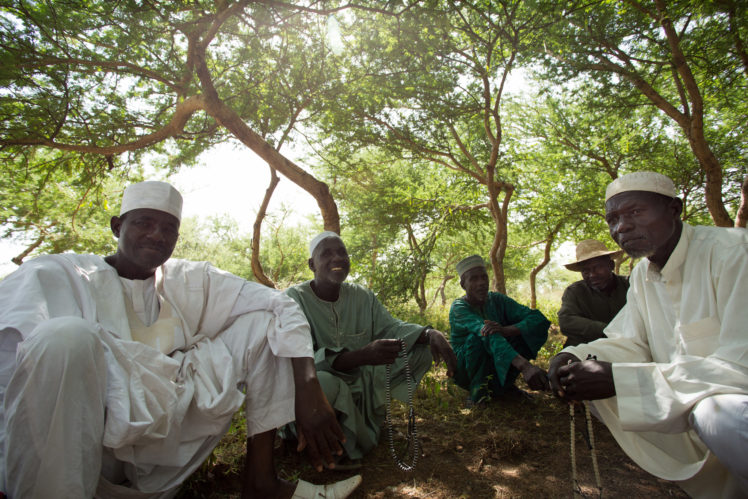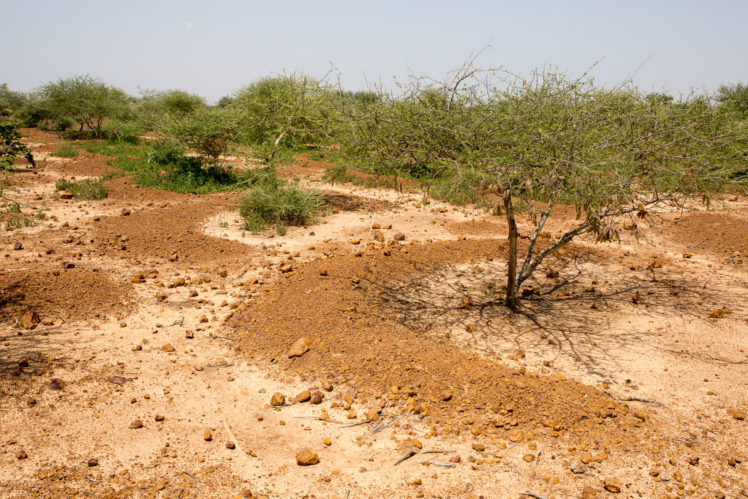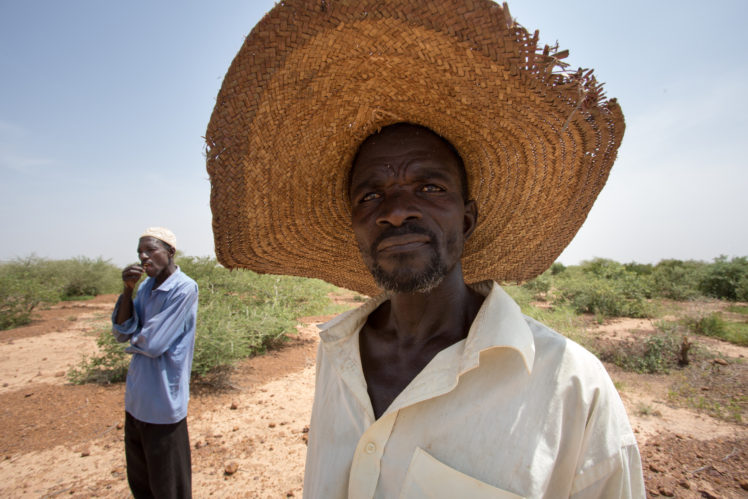Niger is a surprising success story in Forest and Landscape Restoration (FLR)
By Lynsey Grosfield
“I flew from Ethiopia, and you can see it when you fly over the border from Chad to Niger,” says Dr. Kelechi Eleanya, an instructor at the Yale School of Forestry and Environmental Studies. “From the plane window I noticed the colors shift quite rapidly from warm reds to cool greens.”
Though Niger is currently facing slow growth in terms of the human development index, or literacy rate, it is a diamond in the rough for Forest and Landscape Restoration (FLR).
“Niger is an interesting country according to its existing experiences in landscape restoration, and also the dedication by the government on this topic,” adds Horst Freiberg, Co-Head of Forest Conservation and Sustainable Forest Management, Biological Diversity and Climate Change Division at the German Ministry for the Environment, Nature Conservation, Building and Nuclear Safety (BMUB).
As a part of the Second Annual AFR100 Partnership meeting in Niamey, Niger, delegates visited local restoration sites: tributary projects that swell together to form a stunning five-million-hectare Nigerien success story in Farmer-Managed Natural Regeneration (FMNR). At these sites, the triumph of this people-centered approach is obvious.

The first site was Tchida village, 55 kilometers West of Niamey. Here, Programme d’Action Communautaire Phase 3 (PAC 3) — funded by the World Bank; Global Environment Facility (GEF), and the Government of Niger — rolled out in 2010 with an ambitious plan to green 120 hectares, primarily using the economically-versatile Gum arabic tree (Acacia senegal).
This sprawling project site was a first encounter with what the local community was calling — in translation — a “demi-lune” method for building up soil carbon and bolstering water infiltration. Also called zaï pits or tassa, this restoration method was detailed in the 2010 documentary film The Man Who Stopped the Desert.
Tchida is situated in a climate of extremes: historically the rainy season has flooded the village and carried away valuable soil carbon and biomass, while the dry season brings a “hunger gap” between the time food stocks run out and the next harvest. Thus a landscape-level solution for restoration on these lands must to address flooding, water infiltration, soil carbon capture and food security.
The answer to all of these woes is deceptively simple: digging shallow pits, filling them with biomass (dung, green compost), planting a nitrogen-fixing acacia in the middle, and surrounding everything with a crescent of sand and rock is enough to stop the floodwaters and force them to percolate down to nourish tree roots long after the rains stop. Whatever they are called in the local parlance, be it zaï, tassa or demi-lune pits, they have the potential to stop the desert.

This soil-building method addresses several problems inherent to dry, cracked and compacted land — also called “zipelle” — which is especially challenging to work with on the rolling hills and valleys of the landscape. While slowing the rainy season floodwaters and their accompanying erosive tendencies with sand and rock barriers is an obvious mechanism of action, there is also something happening beneath the biomass in each pit: termites move in to feed on organic matter, and in doing so, tunnel beneath the compacted soil. These tunnels become the pathways for water to reach the subsoil, and where water goes, tree roots follow.
The Gum arabic tree (Acacia senegal) is the ideal pioneer tree species for these kinds of projects. According to a Nigerien “restoration champion” Yahouza Harouna de Tambara-Sofoua Yahaya who presented at the partner meeting the day before, it can produce everything from resins to pasta to firewood, while simultaneously fixing atmospheric nitrogen (as many leguminous trees do), and withstanding periods of extreme water stress.
In Niger, where severe droughts ravaged the Maradi and Zinder regions in the South during the 1960s-1980s these interventions have been crucial for food security. The French colonial government had promoted clear-cutting trees and cultivation of monocultures, which expedited the rate of land degradation. “Sahel” means shoreline: the region is the border against the creeping advancement of the Sahara desert.
Loga, 120 kilometers West on the Sargagi road, is home to the secretariat of a second farmer-owned and led project for soil carbon sequestration and maintenance, called PAC 2.

Moussa Sounna manages the project, which is on 300 hectares and managed by seven villages. He believes that part of the success of the project is owed to the fact that the people working the land are leasing it to the project for 30 years, and gain income from the harvest of Gum arabic.
Speaking to the many visitors from the AFR100 meeting, Sounna added, “we want to get the message out to the world, and let them know what is happening here.” Both of the sites are above and beyond the additional 3.2 million hectares pledged by Niger towards the 100-million-hectare 2030 restoration goal of AFR100.
Almost as a portent of a greener future for the Sahel region and Niger, as the Partnership Meeting convoy cruised back towards Niamey’s city limits, a young male giraffe could be seen ambling along, browsing vegetation not 500 meters from the roadside.
According to Mamadou Diakhite, AFR100 Secretariat Manager and Team Leader of Sustainable Land Management at The New Partnership for Africa’s Development (NEPAD), “having the unique chance to miraculously encounter a rare all-white giraffe in the outskirts of Niamey is living proof that conserving and valorizing Africa’s wildlife is part of our restoration and development agenda.”
It turns out, what is good for the people and land is good for the iconic local wildlife as well.



